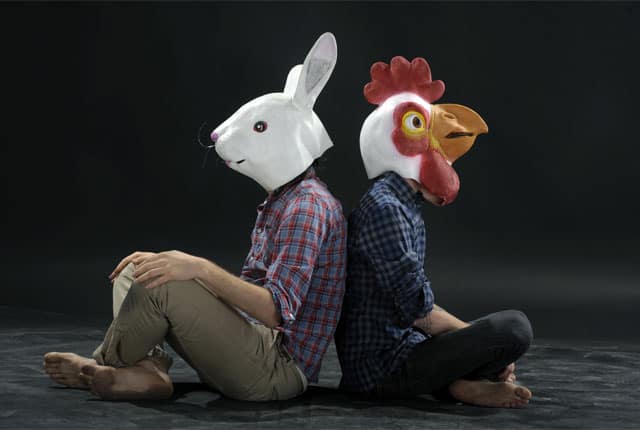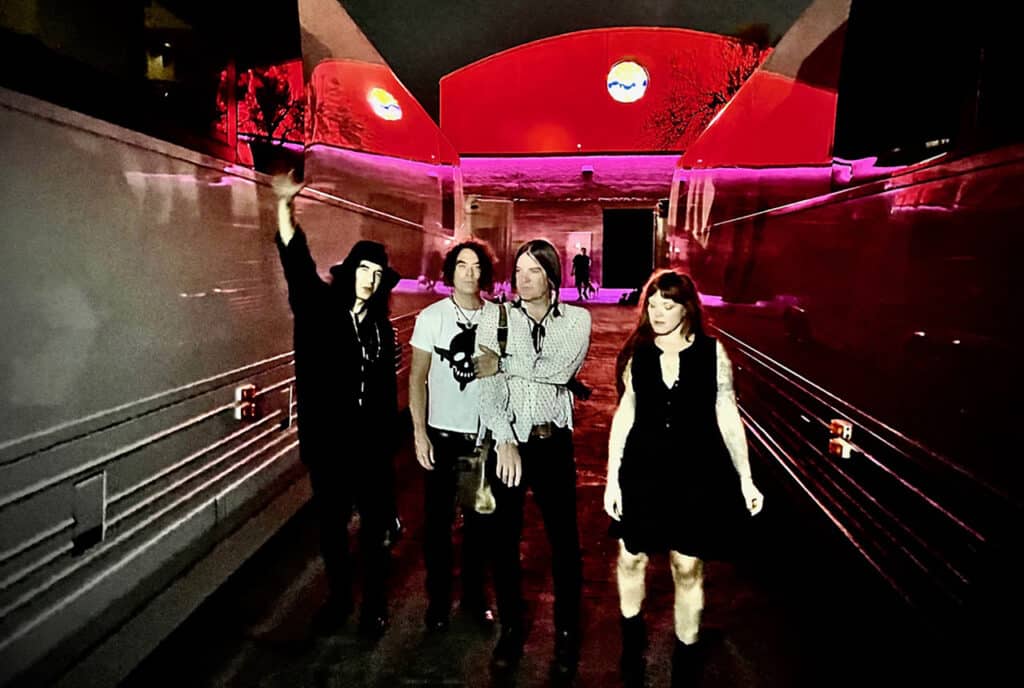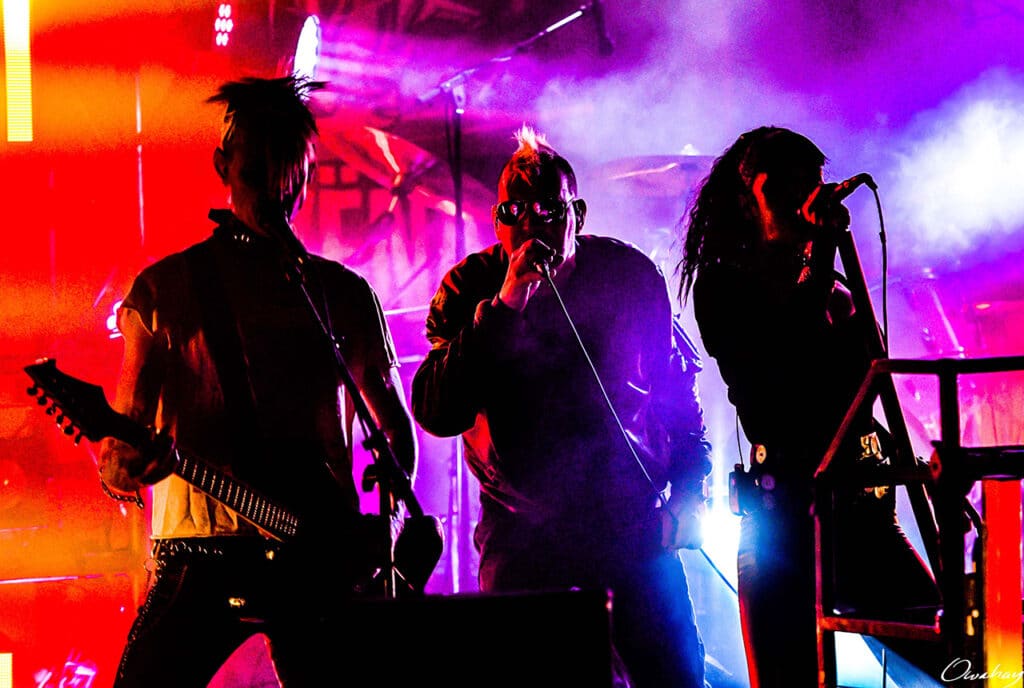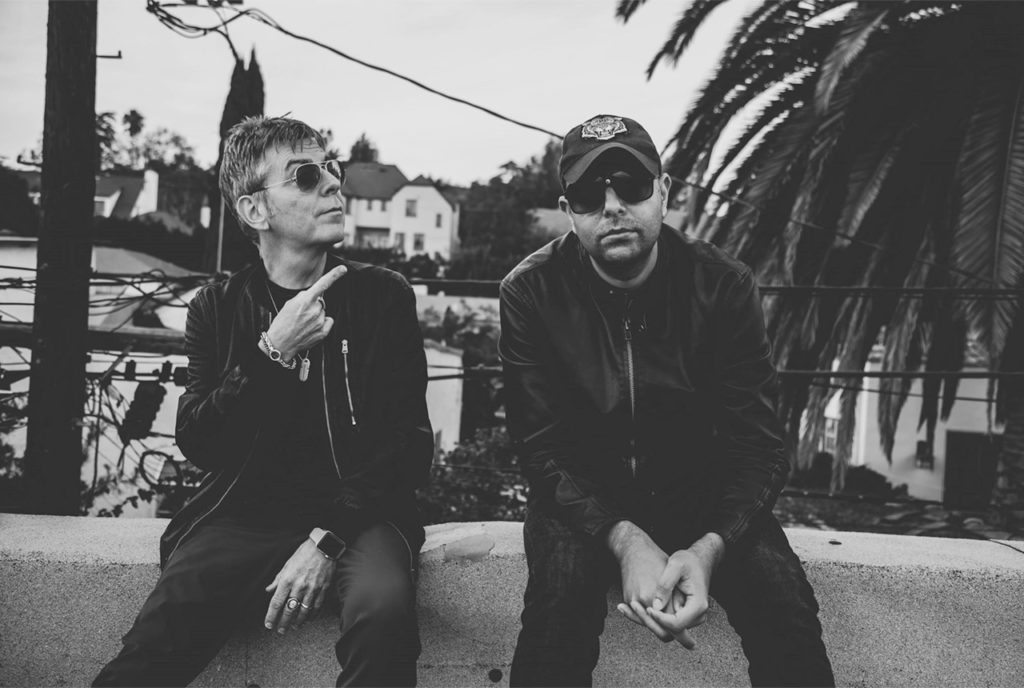On their primarily instrumented third album, “PiecesOfUsWereLeftOnTheGround,” Italy’s JoyCut present a highly rhythmic sound that is at once experimental and completely accessible. Utilizing electronics and ‘found sounds’ as well as traditional instruments, Joycut create soundscapes that are unparalleled. The music is fairly dense, but still allows catchy melodies and driving percussive elements to make their way to the surface. Joycut are about to embark on their first major American tour, and in a fascinating email interview told us about their approach to music, commitment to promoting ecological awareness, and more.
Could you describe your creative process? In particular, I’m wondering to what degree sounds vs melodic ideas provide the initial spark that leads to a new song.
Analysis: At this stage everything goes, any creative cue is crucial, any sound is considered, even a noise coming from the street. There are not predetermined paths or a particular-specific methodology to follow. Getting lost is the primary interest, the name of the game. We need to turn back the clock, again and again if we want to hit the mark. No time, no space. Then, give up, let go, relax, breathe, diving in reality, going out, running or walking, cruising in the car at night. Once back with the tracks, we listen, listen and listen to the work we (left) suspended, pursuing the rhythmic code often hidden in the folds of those theme plots previously recorded. We like when rhythms come from phrases played by other instruments. In ” Wireless”, for instance, the main drumbeat replaces melody.
Synthesis: After determining this rhythm line we can start choosing the appropriate sound color in relation to our personal mood, simplifying, streamlining. Then, when we have the fabric of the sound on a string, we can start working on the harmonic composition. In this phase we are already writing music and a new song’s being born.
Does the writing and recording process tend to be the same thing, or do you generally have a least song frameworks worked out ‘live’ first?
It depends. Writing and recording were quite the same thing for this record. PiecesOfUsWereLeftOnTheGround was a dynamic streaming consciousness process. Every single idea was captured on a digital notebook or on a proper computer, ready to be edited in order to reach its final shape. We had been working for a few years without thinking about making a new album, even more so, we could not have imagined it would have been instrumental or conceptual. We were only interested in studying and investigating. The “live” side was essentially part of this procedure. At the end of the day we wrote an Album and we were already able to perform it.
There are a lot of interesting sounds on the new album, particularly in the percussion. Could you explain a bit about the instrumentation and sources of sounds used?
The majority of the ideas and many initial sparks came from rhythmic suggestions we have freely imagined through the soliloquy of thought. It was not that difficult to translate this theoretical creative system from concept to reality. We wanted to produce a deep contrast between electronics (virtual) and acoustics (real); we felt like narrating the discomfort of modern civilization. That’s why many percussion instruments used were sought from recycled material such as tubes, pipelines, cans of gasoline, steel objects or aluminum sheets, plus real drum floor toms, that were deep and warm. The industrial tribalism is a representation of the urban domain of our time. This beats the beats of our existence.
What determines whether a song will have vocals? Did you set out to not have as many vocals on this album, or did it just turn out that way?
You feel it. At the end of the day after listening to it a million times you see the song project on its timeline and it appears on an audible canvas. You recognize whether removing or adding something else is needed.
This album appeared immediately accomplished already, so full, without vocals. Also, we live in times full of relativism. Everyone, thanks to social media networks, can slam on the front page their own truth. We do not believe in many things, at this point. Many of the despicable values have been wiped out without being replaced by new ones. Everyone thinks he’s or she’s free. People think they can exercise their freedom through the choices they make. Everybody is talking, talking, talking. It’s too much. No one has time to listen. This work wants to celebrate the “Profession of Silence”.
What was the timeframe of making “PiecesOfUsWereLeftOnTheGround”?
We were not planning anything. That was a very intense piece of life. Two and a half years passed by. We noticed we were collecting loads of sound experiences and self recordings throughout that period. The Album is the result of our daily preferences captured in these last years.
At the end of the process we can tell this is very intimate, deep and introspective.
Why leave all spaces out of the title “PiecesOfUsWereLeftOnTheGround”?
We have been traveling inside ourselves experiencing hard and reflective underwater spots.
We did not want even a single piece of those moments to be lost. Each of them were so intense and unique. We wanted the conceptual path, addressed by the work, to be undamaged, without cracks or spaces inside itself. Leave all spaces out of the title is a calligram, the image created with the words visually expresses their essence and meaning, a pure metaphoric aesthetic code.
Why did you chose to not show your faces in early photos?
I do not think they are important. JoyCut is a project. People have to identify our sound, we like to focus more on and care more about the music. Images are just a tricky for human perception. Also we push people to participate actively, penetrating this album, jamming on it, remixing it, destroying it, improving it.
Everyone can be JoyCut. One of the pictures we chose for our national press is the one we use to call the “Caravaggio Painting” in which loads of characters with personal and specific stories to tell, rare expressions in their eyes pose in front of the reality playing their ordinary part. Sometimes, it could be better to wear masks, perhaps we actually end up more authentic then when we don’t. Maybe not showing your face gives others the opportunity to know you for who you really are.
You’re about to embark on your first major US tour. Are there any particular ways these shows might differ from your European performances?
Not at all. Regarding our attitude we’re gonna perform at the same level, with the same passion and concentration.
All around us will be different. People, their feedback, places, tradition and atmosphere.
We will reflect all these vibes during the performance.
This banal consideration apart, when you play you forget or let go of your age, your name, your country, your fear, your peace. You become what you express, purely, deeply, at one with the energy around.
For those who haven’t seen you live, how would you say that your live sound compares to your recordings? Do you feel there are any particular challenges to presenting your music live?
Our live sound is much more powerful. Just imagine two drums playing together, side by side. Also there are visual installations projected behind us on stage. It is an inexorable journey into the unknown.
I’ve seen mentions of the “Ghost Trees Forest” campaign but could you explain a bit about what that is?
We have written a hymn. It is called Clean Planet. In those verses we sing about our planet’s health. We do that in our way. Despite Aphorisms. Blurred linguistic codes. The message is clear. All that we are asking is to “love”. Deeply. The Trees. The Wind. Our own “Nature”. Therefore coherence does not fit the weak. We recorded our second album at The Premises in London, the only European recording studio completely powered up by 18 solar panels. Recycling broken machines we managed to wrap our packagings with bio-materials. We’re using water inks and vegetal glues and minimizing the ecological impact with recycled paper FSC [Forest Stewardship Council] and PECF [Program for Endorsement of Forest Certification Scheme]. We’ve realized and shared a “Local Event” with 350.org & Italian Climate Network. We’ve been the only Italian project that distributed music “for free”, an unique Zero Impact among the local entertainment market. In June 2009 we conceived the Campaign “Ghost Trees Forest”, on XL Repubblica, a magazine with national circulation in Italy, promoting sustainable options in the music industry: the result has been the first green edition of the magazine, completely wrapped in bio-material with, as an attachment, our eco-packaging containing our sounds_ Also, “PiecesOfUsWereLeftOnTheGround” has been published, in both digital and printed format, respectively on the 16th and 19th of September, the International and the Italian Days dedicated to the preservation of the ozone layer.
Beyond this US tour, what is in the future for JoyCut?
We hope, first of all, to gather support from the American audience. Once back home in Europe, we will tour France for a dozen days. Then we will touch down in Bruxelles and continue in Italy for some summer festivals.
Honestly, we’d love to sign with an American label. We believe the American audience can connect with the primal passion and expression we present through our work. So, we’ll do our best and try our hardest to present who we are and what we have to offer to America. Hey, after all, this is the land of the free and the home of the brave, right? That’s what our work is all about, fearless and authentic expression. We would like to publish and distribute this album also in the U.S. while we are working on a new one. We wish to come back soon and maybe experience a piece of our own future life history in America.










